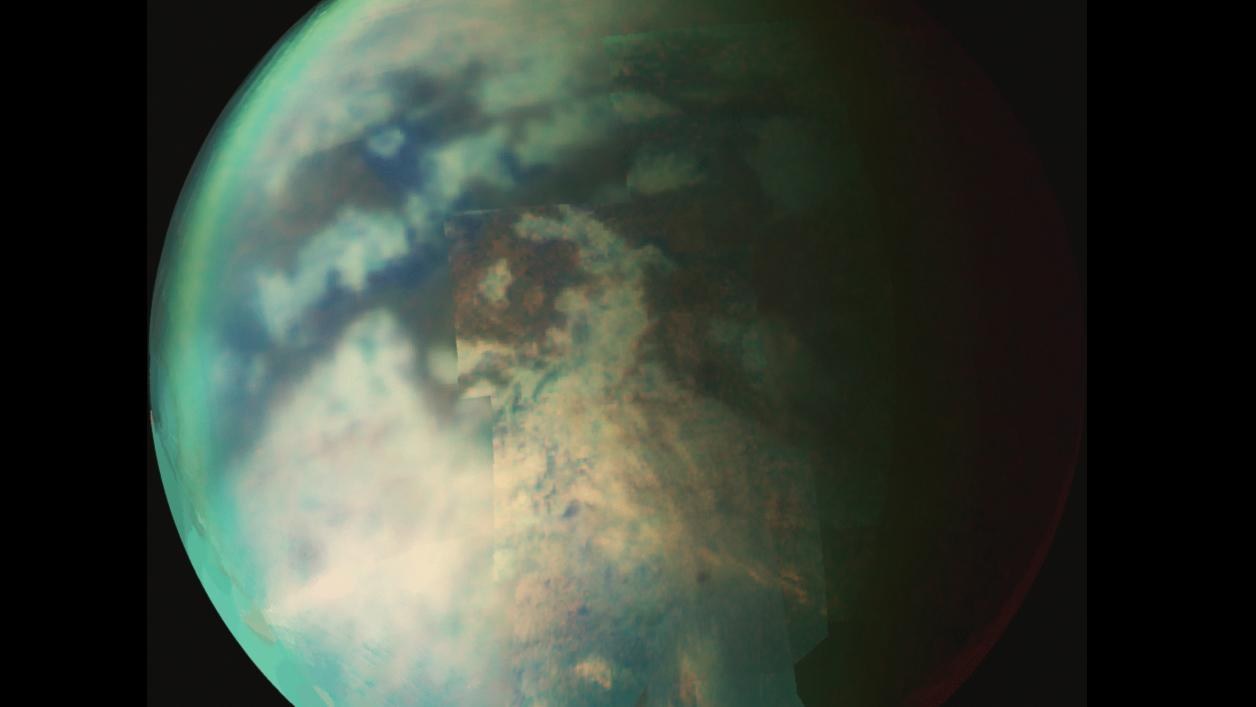Titan - Saturn's moon with hydrocarbon lakes under a dense atmosphere
Titan - Saturn's moon with hydrocarbon lakes under a dense atmosphere
At 5150 kilometres across, Titan is the second-largest moon in the Solar System and one of the most mysterious. An atmosphere surrounds many planets. Titan, however, is the only moon in the Solar System with a significant gaseous envelope. The atmosphere is a brownish-orange and so dense that the moon’s surface cannot be seen at visible light wavelengths. Only by using what are known as 'atmospheric windows' – narrow wavelength bands in the near and middle infrared is analysis of the surface possible. This technique is used by the infrared spectrometer VIMS (Visible and Infrared Mapping Spectrometer) on the Cassini space probe, which has been analysing the Saturnian system since July 2004. Because of the distance of Titan from the Sun, its surface temperature is about minus 180 degrees Celsius.
The picture shows a superposition of VIMS images of Titan in three different infrared wavelengths: 1.3 microns (thousandths of a millimetre, blue),) 2 microns (green) and 5 microns (red). The circular structure in the middle is probably an older impact basin. Titan's equatorial latitudes are most likely dry areas, without extensive 'water'. The numerous liquid bodies in the northern hemisphere, one of which is described in this web article, the Kraken Mare, are probably part of an active fluid circulation. These lakes are fed by liquid hydrocarbons that a drainage system carries out of the surrounding valleys. The drainage system, in turn, is fed by methane and ethane precipitation. Many scientists suspect that the nitrogen atmosphere of Titan exhibits strong similarities with the primitive atmosphere of the Earth.

